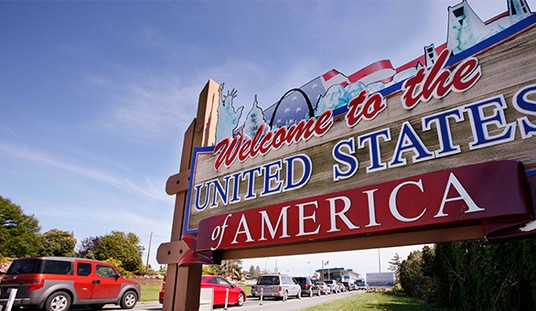Georgia voters in the Atlanta suburbs will go to the polls on Tuesday in a special election for the congressional seat vacated by Health and Human Services (HHS) Secretary Tom Price. Democrats say it’s a referendum on President Donald Trump, and they think they can win. But there is good reason to be skeptical.
Democrats did well in special elections in California and Kansas, and hope to surprise in the Peach State as well.
Here are five things you should know about the special election for Georgia’s 6th congressional district.
1. A red district in a red state.
Democrats hope to do well Tuesday because Donald Trump only won by 1 percent in November. But Georgia’s 6th congressional district usually favors Republicans.
Tom Price carried the district by 23 percent in 2016, and Mitt Romney won by the same margin in 2012. By FiveThirtyEight’s weighted average, Georgia 6 is about 9.5 percentage points more Republican than the nation as a whole. This means that if there were a tie in the national popular vote, a Republican would likely win Georgia 6 by 9.5 points.
Price has won with at least 60 percent of the vote in Georgia 6 since 2004. It has been held by a Republican since 1979, when Newt Gingrich first took the seat. If Democrats can win here, it would be a big coup for the party.
2. A crowded race.
There are no fewer than eleven Republicans and five Democrats in the special election Tuesday. The race is a “jungle primary,” which means that there is no cap on how many candidates can run, and that has actually hurt Republicans in Georgia 6.
Local Democratic leaders and liberal activists have coalesced behind Jon Ossoff, a former congressional staffer. Ossoff has raised over $8 million and is likely to win the vast majority of Democratic votes. For this reason, he has a healthy lead in the polls.
Republicans are divided between two leading candidates, with many others taking smaller chunks of the GOP vote. Former Georgia Secretary of State Karen Handel comes in second place in most polls, but businessman Bob Gray is close behind her. Former state Senators Judson Hill and Dan Moody trail both of them, but still take almost 10 percent of the vote. Were Handel to consolidate the votes of Gray, Hill, and Moody, she would beat Ossoff. But that’s not how this works.
The important threshold is 50 percent. If any candidate takes more than half of the vote on Tuesday, he or she wins. But that is not exactly likely.
3. Poll results.
Ossoff may be a Democrat, but he has a very healthy lead in the polls. He leads Handel by 25.8 points, taking a whopping 42.8 percent in the RealClearPolitics average. Handel comes in second with 17 percent, and Gray third with 13.2 percent. Moody (8.4 percent) and Hill (8 percent) are also noteworthy.
Among the many other candidates, two more deserve mention: Republican businessman David Abroms (2 percent) and Democrat former state Senator Ron Slotin (1.5 percent).
As FiveThirtyEight’s Harry Enten and Ryan Matsumoto pointed out, even if Ossoff won all the undecided voters, he would still only hit 46 percent, short of the 50 percent plus one he needs to win outright.
Nevertheless, it is important to keep in mind that special election polls (like all polls) are imperfect. Enten and Matsumoto tested 54 polls from special House elections since 2004, and compared the leading candidate’s share in the poll with final election results. This study revealed a “true” margin of error of about plus or minus 8.5 percentage points — almost double the theoretical margin of error posted for the polls in the Georgia 6 special election.
This means an outright victory for Ossoff is not out of the question. Whether the Democrat secures 38 percent of the vote or 54 percent, those results would still fall within the margin of error. As Enten and Matsumoto noted, polling for House races is less accurate than for higher-ballot races, and special elections in particular are difficult to poll because turnout is unpredictable.
4. A complex district.
Georgia’s 6th congressional district breaks down into three very different counties: Cobb, DeKalb, and Fulton. The Cobb section is 76 percent white and the most Republican, and Trump carried it by 15 points. The DeKalb section has the largest number of black voters (16 percent) and is most Democratic, and Clinton won it by 19 points.
The Fulton County section provided about half of the district’s vote last year, and the registered voters are 64 percent white and 12 percent black. Trump won the Fulton section of Georgia 6 by 3 percent.
FiveThirtyEight came up with a set of benchmarks Ossoff will need to hit in each of the counties, in order to win the race outright on Tuesday. If the Democrat takes more than 43 percent in Cobb, 60 percent in DeKalb, and 49 percent in Fulton, he should pull off the win.
5. Why Ossoff doesn’t live in the district.
On Tuesday morning, CNN “New Day” host Alisyn Camerota asked Ossoff whether he could vote for himself in the election. His refusal to answer the question suggested the answer is no. But the reason why is even more interesting.
“I’ve been living with Alicia, my girlfriend of 12 years, down by Emory University where she’s a full-time medical student,” Ossoff told Camerota. “I want to support her in her career and do right by her.”
To this, the CNN anchor shot back, “So when are you going to marry her?” In deep-red Georgia, Ossoff’s lack of commitment might be a problem. In the Bible Belt, it certainly cannot hurt to have a history of marriage, rather than dating. Both of the leading Republicans — Karen Handel and Bob Gray — have been married many years.
The fact that Ossoff doesn’t live in the district could be a large electoral liability.
Even so, the Democrat has been doing well among early voters. That makes sense, since Republicans have more candidates to choose from. Don’t be surprised if the early results Tuesday evening show Ossoff above 50 percent — early votes are usually counted first, and the Democrat’s margin is likely to decrease as the night goes on.









Join the conversation as a VIP Member